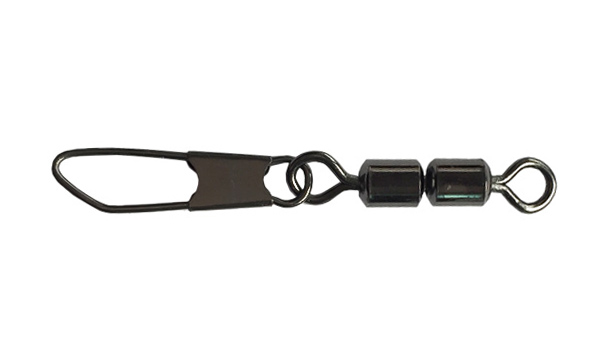

1. What are Fishing Snaps? Fishing Snap is a metal buck […]
1. What are Fishing Snaps?
Fishing Snap is a metal buckle that connects the fishing line to the fishing gear (such as lures, sinkers, fish hooks, etc.). It is shaped like a small pin and is sometimes used with a swivel. Its main function is to allow anglers to quickly change lures or fishing gear without having to cut the line and tie the knot repeatedly.
Simply put: Fishing Snap is the "universal quick-release interface in fishing."
Whether you are fishing with lures, long-distance fishing, sea fishing or floating fishing, as long as you need to change the fishing gear frequently, this small buckle is your good helper.

2. Why are Fishing Snaps important?
Although it looks like a small hardware, Fishing Snap plays a huge role. Here are some of its core advantages:
Quickly change fishing gear
Want to change the lure but don't want to cut the line and re-tie it? One buckle, change it in 3 seconds! Especially in lure fishing, constantly testing different lures to attract target fish, Snap can greatly improve efficiency.
Reduce main line wear
Frequent line cutting can easily shorten the main line and reduce the tensile strength; using Snap can achieve multiple replacements without cutting the main line, effectively protecting the life of the fishing line.
Improve fishing efficiency
In key time periods such as nesting, tides, and active windows, using Snap to quickly change groups can seize the "golden ten minutes".
Enhance combination flexibility
Whether you are using soft baits, hard baits, or sequined lead hooks, Snap can easily adapt, and can also quickly change lures, sinking and floating hooks, saving space in the bag.
3. Common types of Fishing Snaps
Different fishing methods and environments have different requirements for Snaps. The following are several common types:
Ordinary pin type Snap
It looks like a safety pin and is the most common style. Suitable for most lure fishing methods, simple structure, and fast bait change.
Swivel buckle Snap Swivel
Snap combined with a swivel can effectively prevent the fishing line from being entangled due to spinning lures or fish struggling, suitable for sea fishing, trolling and other environments.
Quick connection buckle Quick Snap
The design is simple and plug-in. It is mostly used for competition or quick bait change, and is very friendly to skilled players.
Double Lock Snap
With two buckle points, it has stronger tensile resistance. Suitable for medium and large fish species with high load-bearing requirements.
4. How to choose a suitable fishing snap?
It is not "the more expensive the better", but "matching is the most important". Please consider the following points when choosing a Snap:
Tensile value (load-bearing capacity)
The load-bearing capacity of the Snap must be greater than the average weight of the target fish species. Generally, more than 30% redundancy is reserved for more insurance.
Material quality
High-quality stainless steel or copper Snaps are corrosion-resistant and oxidation-resistant and can be used for a long time. Rust-proof materials must be selected for sea fishing.
Size matching
The size of the Snap should not be too large, otherwise it will affect the natural movement of the lure; it should not be too small, which is easy to break or deform.
Is a swivel needed?
For lure fishing, ordinary Snaps can be selected. For trolling or bottom fishing, it is recommended to use a style with Swivel to prevent line entanglement.
5. Usage tips and precautions
In order to maximize the effect of Snap and avoid the tragedy of fish escaping due to snapping, please pay attention to the following points:
Check for deformation
Snap may produce metal fatigue after repeated use, so it should be checked regularly and replaced in time.
Pay attention to the direction of bait loading
Correctly insert the bait into the connection hole of the bait to avoid affecting the action of the lure.
No violent pulling
Using Snap cannot completely replace the strong tying method. Fighting against big fish still depends on the overall quality of the line group.
Cleaning and maintenance
Rinse with clean water after use, especially after sea fishing to avoid salt corrosion and extend the service life.